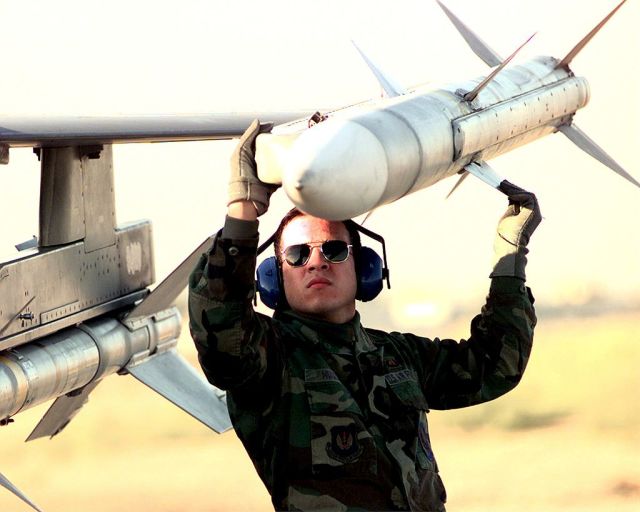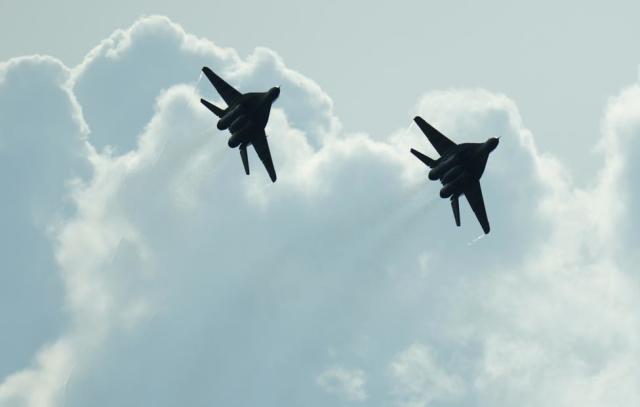In March, two NATO countries announced the delivery of MiG-29 aircraft to Ukraine. In order to resist modern Russian fighters, European MiGs are going to be upgraded with modern American AIM-120 AMRAAM missiles and new radars. Read more about this weapon in the TASS materialNATO cleans hangars
As previously reported by TASS, in total, the AFU should receive several dozen combat aircraft, most of which are Soviet MiGs, purchased and put into service back in the days of the Warsaw Pact. The first batch of four fighters, as the head of the Slovak Defense Ministry Yaroslav Nagy said on his Facebook (owned by Meta Corporation, which is recognized as extremist and banned in the Russian Federation), has already been delivered to Ukraine.
With a batch of outdated MiGs, NATO expects to strengthen the AFU air group, however, according to experts, it's not even about the age of combat vehicles. According to the military observer of the online publication Bulgarian Military Boyko Nikolov, European MiGs have been gathering dust in hangars for too long, they are not serviced and there is simply nothing to arm them with.
"If Ukraine is going to somehow resist Russian air superiority, then the MiG-29s offered to it must meet modern requirements. Otherwise, it will be nothing more than just a political gesture. Before using fighters in combat, they must undergo serious modernization, otherwise they will quickly turn into flying targets," the Bulgarian journalist notes.
According to Honored military pilot Vladimir Popov, the upgrade of the European MiG-29 will require at least several months.
"Fixing new equipment on an airplane is only part of the problem. It is not so difficult to put new rockets on the old suspension, good specialists will do it in a few days. Moreover, the United States has specialists in MiG-29, several cars fell into their hands after the collapse of the USSR. But then the planes need to "fly around" at the landfills so that the installed equipment is tuned, the sighting systems have been adjusted (the procedure for checking and adjusting accuracy — approx. TASS). It will take much more time," says the military expert.
Modernization attempts
In addition to the MiG-29, which Poland and Slovakia are planning to supply, the Armed Forces of Ukraine has maintained its own small fleet of these machines since Soviet times. In 2001, the Lviv Aircraft Repair Plant produced the first batch of upgraded MiGs with the MU1 index, later, in 2020, the MiG-29 MU2 appeared. The purpose of both projects was to replace part of the avionics equipment to improve the basic tactical and technical characteristics.
Nevertheless, both versions of the fighter remain "sharpened" for the use of R—73 and R-27 air-to-air missiles, of which Ukraine does not have so many, and they are produced only in Russia.
AMRAAM
Planning to supply fighters to Ukraine, NATO began to look for alternative ways to arm them with modern ammunition. According to the American online publication The Drive, the West is going to arm the MiG-29 with AIM-120 AMRAAM missiles. In 2022, Kiev has already received them, but in the "surface—to-air" version for use in NASAMS anti-aircraft missile systems.
As previously reported by TASS, the on-board AMRAAM control system consists of an autopilot with a radio command course correction, as well as an active radar homing head (ARGSN), which turns on at the end of the trajectory, while the target is hit in the "shot and forgot" mode. The manufacturer claims that the modern control system "allows the rocket to quickly find targets in the most difficult conditions," and states that over 30 years of operation, this rocket participated in combat operations and made almost 5 thousand test launches.
In aviation, the algorithm for using AMRAAM will look like this: first, the aircraft's search radar will send the missile data on the geographical coordinates of the target location. Then the launch will follow, and the ammunition, guided by the autopilot, will go to the specified area. Next, the onboard radar will find and capture the target, after which the pilot will only have to give the command to defeat.
 |
| AIM-120 AMRAAM. |
| Source: wikipedia |
According to open data, the AIM-120 launched from an aircraft carrier will destroy a target at a distance of 120 km, and when launched from the ground — at a range of about 30 km and at an altitude of 15 km.
"A highly effective missile poses a serious threat to Russian aviation. It will allow the Ukrainian Air Force to operate out of line of sight," writes The Drive's military columnist Joseph Trevithick, however, according to him, in order for AMRAAM to really be effective, the MiG—29 needs to replace all the main electronics of the aircraft and, first of all, the onboard radar, which in the factory version simply will not allow launching American long-range missiles on the principle of "shot and forgot".
As an example, we can compare the onboard radar stations of the European and Ukrainian MiG-29 and the Russian VKS Su-25SM3, Su-30SM and Su-34 in service. According to open sources, the Rubin and Sword radars installed on the MiGs are capable of detecting targets at a distance of 65-70 km. While modern radars of Russian cars "Bars-R" and "Predator" can "see" at a distance of 120 to 180 km. In other words, in order to win in air combat, pilots of old Soviet aircraft, even with AMRAAM on board, will have to enter the danger zone more often, risking falling under enemy fire.
In addition, Western analysts note the rather high price of AMRAAM — about $ 1 million apiece, which, coupled with the cost of reworking Soviet MiGs, could threaten Ukraine's assistants with huge losses.
Countermeasures are provided
According to Vladimir Popov, even if Western engineers manage to quickly integrate American missiles into the MiG-29, the Russian Aerospace Forces will have something to answer. In air combat, modern Russian multifunctional Su-35S and Su-30SM fighters with modern radars with superior target acquisition range will not leave the enemy a chance to win. In addition, according to Popov, the human factor will also play a significant role.
"Russian pilots are better prepared for air battles and guided missile launches. Many of them have been through training flights in the conditions of air combat, are able to repel attacks at low, medium and high altitudes, which cannot be said about the majority of AFU pilots," the military expert concludes.
Prepared by Vasily Kuchushev

